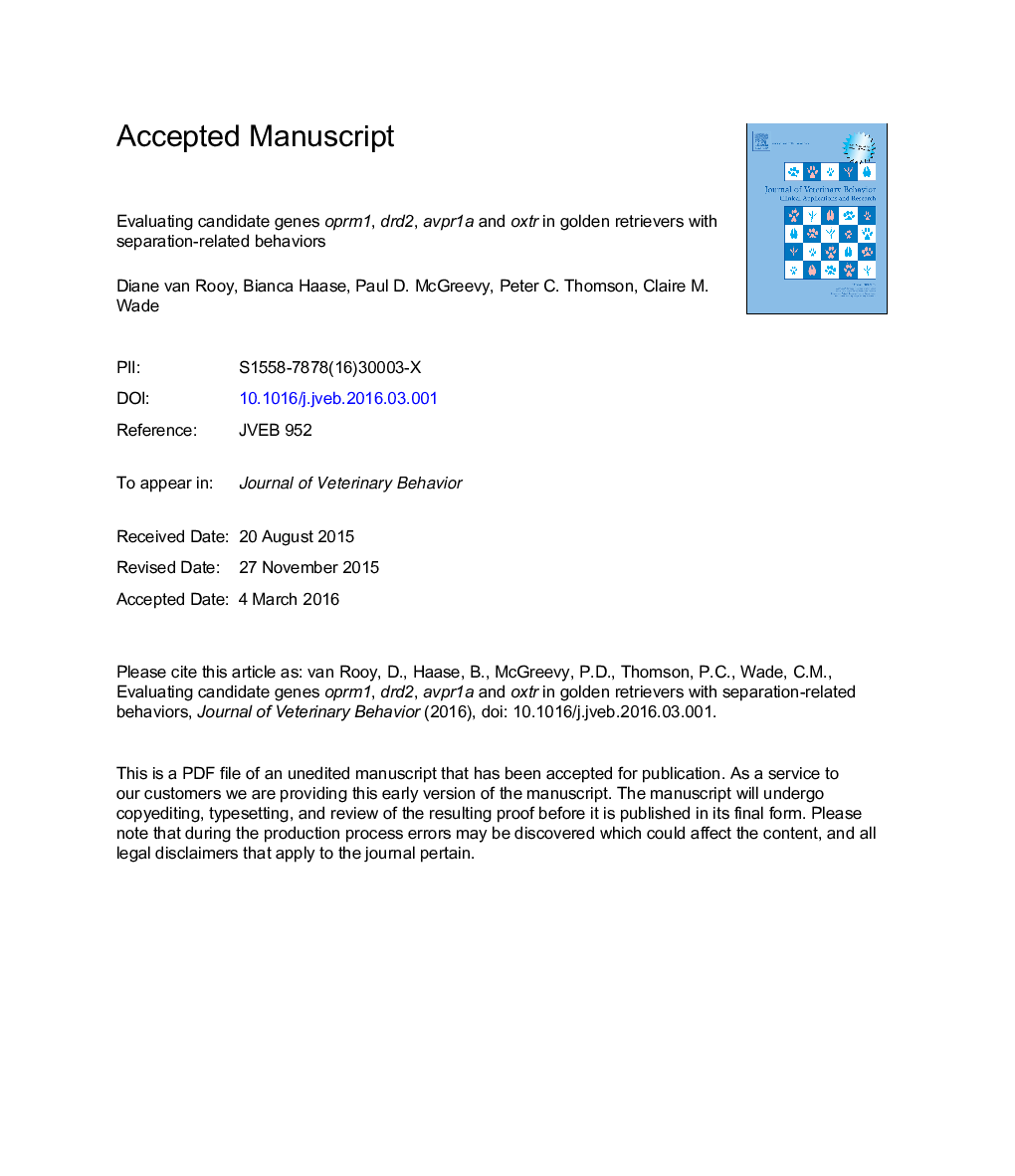| Article ID | Journal | Published Year | Pages | File Type |
|---|---|---|---|---|
| 5535879 | Journal of Veterinary Behavior: Clinical Applications and Research | 2016 | 19 Pages |
Abstract
Dogs are a social species and, as such, often exhibit behaviors to maintain contact with their family. Separation-related behaviors are commonly seen in companion dogs and are second only to aggression as the reason for referral to behavior specialists. Separation anxiety profoundly affects the welfare of the dog and owner, and their relationship. A small proportion of dogs diagnosed with separation anxiety also maintain close proximity to one person in the household, a behavior labeled as “hyperattachment” by some authors. Opinions in the literature vary as to the role of attachment in the etiology of separation anxiety. Four candidate genes that were previously associated with social affiliative behaviors and attachment in a range of rodents and primates were analyzed for case-control association with separation-related distress in 42 Australian golden retrievers. Four haplotypes were taken forward and assessed for quantitative allelic association in 55 golden retrievers (including the initial test set). By analysis of variance, a single risk variant haplotype within 500 kilobases of drd2 maintained significance in the wider sample set.
Related Topics
Life Sciences
Agricultural and Biological Sciences
Animal Science and Zoology
Authors
Diane van Rooy, Bianca Haase, Paul D. McGreevy, Peter C. Thomson, Claire M. Wade,
